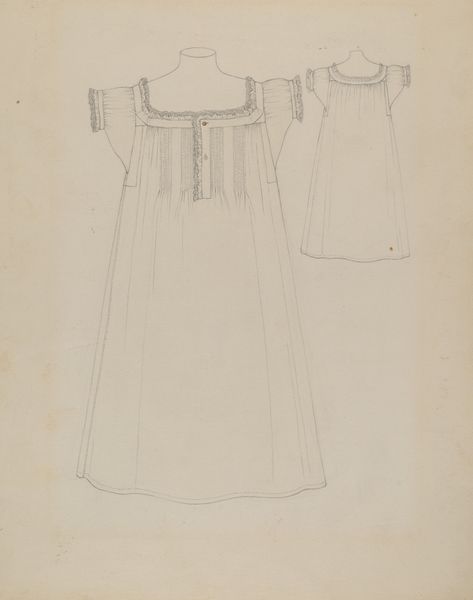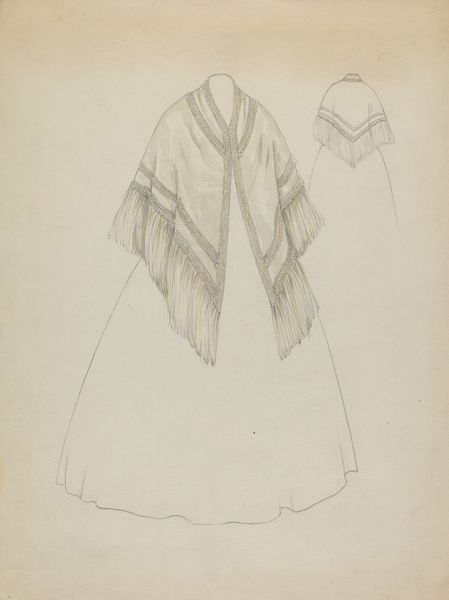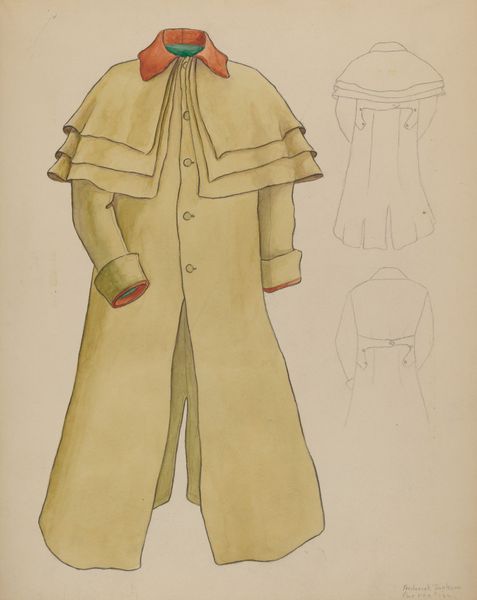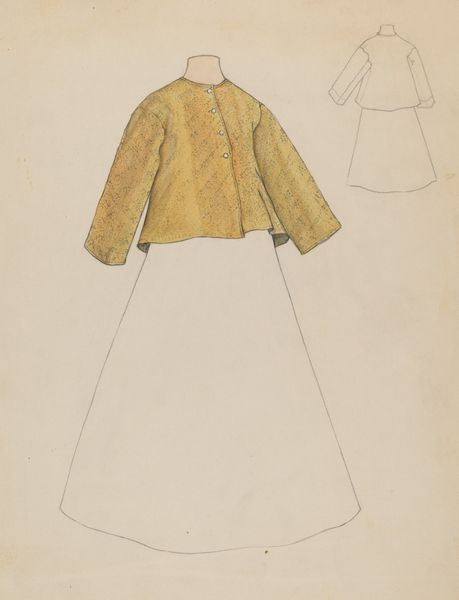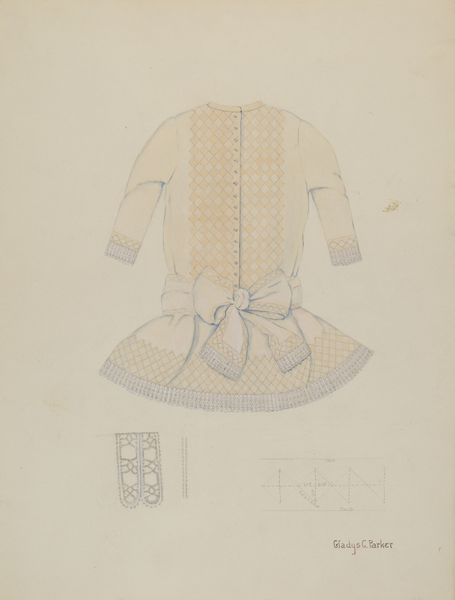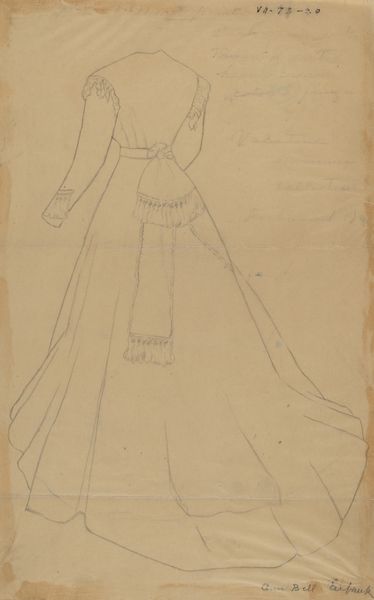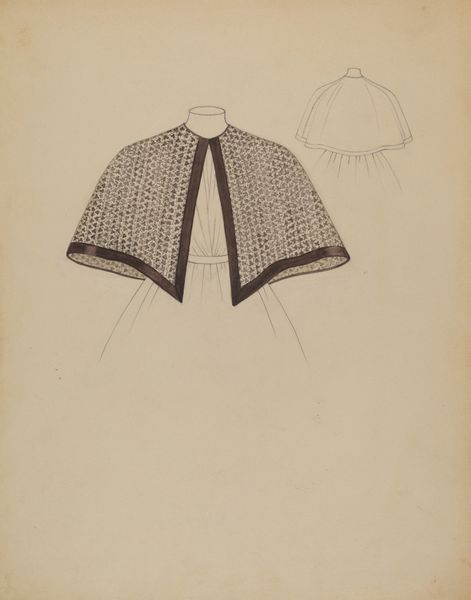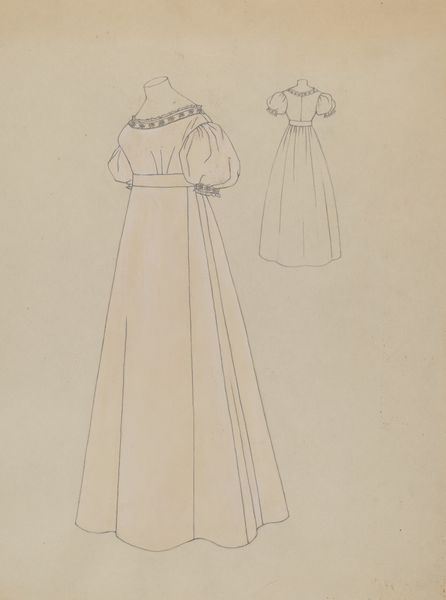
drawing, paper, pencil
#
fashion design
#
drawing
#
underwear fashion design
#
light pencil work
#
fashion mockup
#
retro 'vintage design
#
paper
#
personal sketchbook
#
historical fashion
#
traditional dress
#
pencil
#
fashion sketch
#
clothing design
Dimensions: overall: 30 x 22.9 cm (11 13/16 x 9 in.)
Copyright: National Gallery of Art: CC0 1.0
Curator: Looking at this preliminary pencil sketch from around 1936, titled "Nightgown," by Rosalia Lane, one gets a sense of both fragility and an almost architectural consideration of form. What strikes you most about it? Editor: It feels so...contained. The high neck, the long sleeves—it’s a far cry from the breezy negligee one might imagine. There's a strong element of modesty or perhaps even a kind of cloistered comfort conveyed through the lines. Curator: Indeed, the design emphasizes coverage, resonating with social mores of the time. But consider the delicate pencil work; there’s a lightness too. The ruffles, the pleats—they speak to an embrace of traditional feminine ideals through dressmaking, a time of intricate detailing in garments. What visual continuities might we find across fashion of the era? Editor: Perhaps echoes of Victorian sensibilities clinging on, that sense of restraint in contrast to the interwar period's experimentation. It's like a whisper of the past coexisting with a burgeoning future of simpler dress codes, which makes me question what this garment represents about the changing role of women in the household? Curator: Fascinating. Lane might have been working against or perhaps subverting certain historical associations, especially around privacy and femininity within domestic space. This intimate piece offers more than practical attire; it invites reflection on societal expectations and comfort as both aesthetic choice and material necessity. How did evolving technology in textiles play into her process? Editor: Exactly! Consider too how this image functions as a fashion mockup – part functional blueprint, part aspirational object of design in an era of mass-produced textiles – suggesting new patterns of both industrial labour and leisure. I mean, this object speaks volumes about both a highly personalised and highly commercialised landscape for women. Curator: So the sketch serves as a visual code carrying layered meaning that allows us insights into shifts in taste, manufacture, and underlying cultural forces influencing everyday lives and material possibilities during the period? Editor: Precisely. This image isn’t just about a garment. It tells a broader story of its historical context through form and intention. Curator: It serves as an evocative relic and reminder of shifting trends, all captured with light pencil strokes across paper, as it whispers to the contemporary observer through time, don't you think? Editor: Absolutely; I think this is far more than simply historical clothing—it embodies dreams and silent struggles of its day, which is always relevant.
Comments
No comments
Be the first to comment and join the conversation on the ultimate creative platform.

